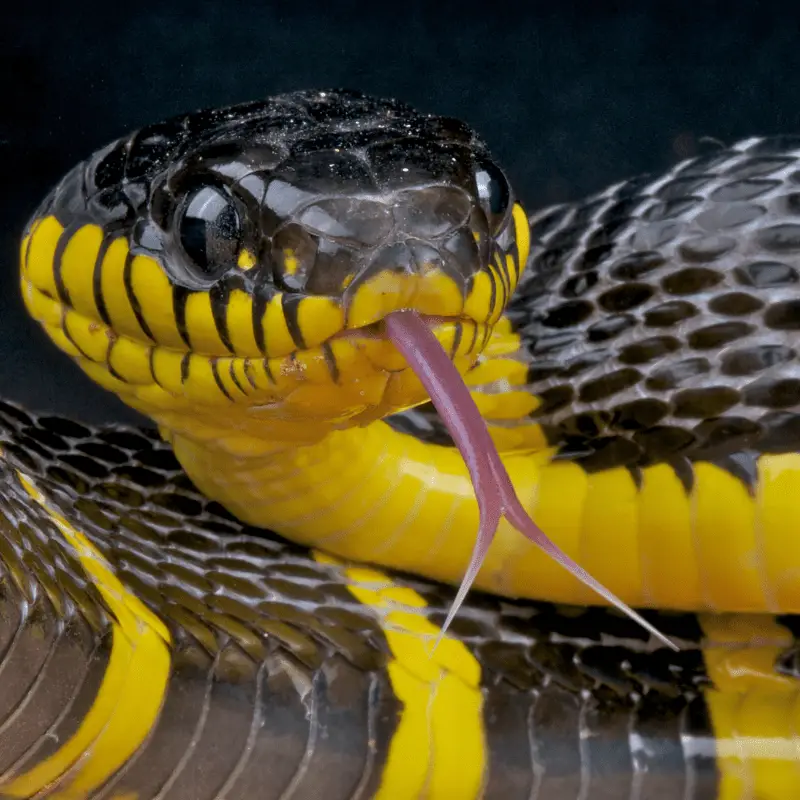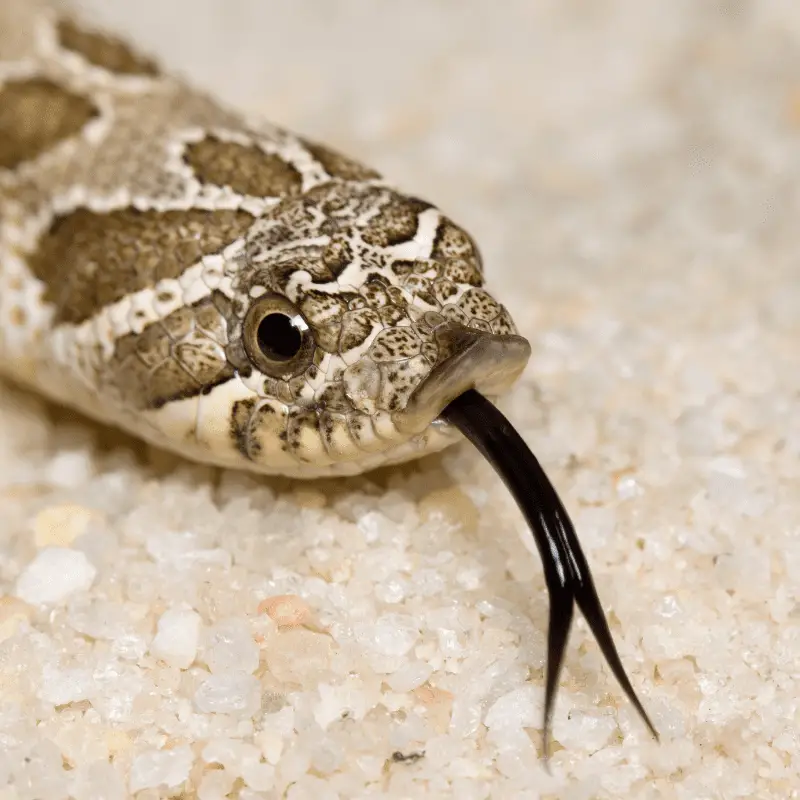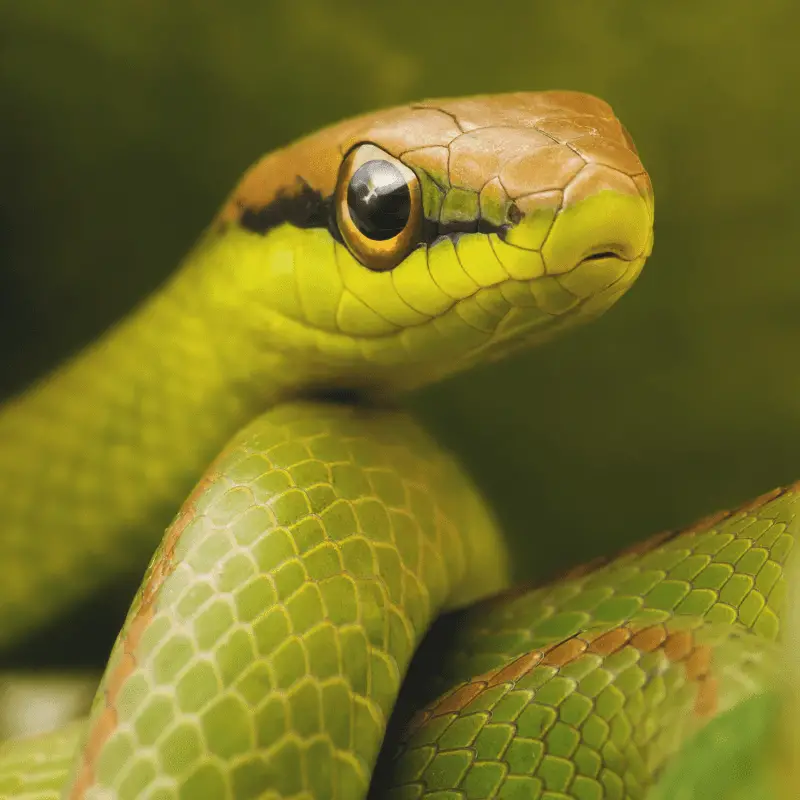Snakes are one of the unique animals that you can find in the wild. Even though they do not possess any limbs, the snakes can climb long trees and boulders. Some of the snake species grow as long as a bus. You can find snakes almost anywhere in the world. Thanks to their unique adaptation, snakes can survive practically any terrain. The heightened senses of the snakes help them to survive in any landscape.
The snakes have an exceptional sense of smell. Their sense of smell is so strong that it covers the gaps created by their poor eyesight and hearing abilities.
Snakes smell best using their tounges
Even though the snakes can smell conventionally through their nostrils, they can do their best sniffling through Jacobson’s organ. It is one of the special organs that lizards have on the roof of their mouths. To smell through this organ, the snakes use their forked tongue.
Most people find the forked tongue of the snakes creepy. Every once a while, the snakes’ wave their tongues around in rapid motions and retract them. The two-fold tongues of the snakes have been around for thousands of years.
A forked tongue is for smelling
Most of the animals use their tongues to taste their food and to clean themselves. Some of the creatures even use their tongue to catch their prey like a frog. Humans and a few other birds and animals use their tongue to make sounds. Unlike all of them, the snakes do not use their tongue for any of these purposes. A snake uses its forked tongue for smelling only. A forked tongue has extreme smelling properties that give a snake a massive boost over other species.

How do snakes use their tongues for smelling?
A snake uses its forked tongues to collect chemicals from the air or other surfaces. The funny thing is that their tongues do not have any receptors for taste or smell. All these receptors are situated in Jacobson’s organ, located at the roof of their mouths. In Jacobson’s organ, different chemical components create various kinds of electrical impulses related to the brain. Previously, it was considered that the snakes’ tongue came directly in touch with Jacobson’s organ. However, modern X-rays have proved this concept wrong.
It has been noted that the snakes’ tongue does not move once it is inside the mouth of the snake. The tongue deposits all the collected chemicals on the floor of the mouth as it closes it. The most likely solution is, these pads help the substances reach the entrance of Jacobson’s organ. It only happens when the snakes’ mouth’s floor comes in contact with the roof after the tongue flicker.
Smelling from all angles with a forked tongue
The forked tongue helps the snakes collect the chemicals from two different directions simultaneously, which allows the snakes to determine which way to move.
Also, when the snakes flick their tongue out, the two head points of their forked tongue can cover an area twice as big as their head. In other words, the forked tongue of the snakes helps them to get the smell in a three-dimensional form. In the same way, the owls use their asymmetrical ears to hear the sounds in three dimensions.
The neural pathways of the owls and snakes are quite the same in this matter. Both of their neural systems analyse the strength of the collected sounds or chemicals. It helps the nervous systems to determine the origination point of the smell or the sound. Humans do this as well, but our hearing ability is not as effective as the owls.
Confirmed in researched
This unique smelling technique is what makes it possible for the snakes to track their prey or mates. In 1930, German biologist Herman Kahmann researched to find the efficacy of the forked section of the tongue. He removed the forked part from the tongues of the snakes and observed their behaviour. He found out that the snakes could still respond to the smells of their prey or their mates. But, they have lost their ability to track them successfully.
Movement by the tongue fork tips
Researchers of the Ford University, Texas, observed how the male snakes use their tongue to follow their potential mates. The researchers noted that the snake does not change its direction when the forked tongue’s width covers the trail. If one tip of the tongue fell outside of the edge of the trail, the snake promptly turns its head and adjusts its direction.
This simple technique helps the snakes to follow the trails of their prey and the potential partners accurately. If both of the forked ends touched the ground outside the trail, the snake would stop moving. Instead, it will continue to swing their head and flick their tongues till they relocate the path.
Follow your venom (Vipers)
This scent trailing helps even the kinds of snakes that do not chase their prey. For example, the snakes like the vipers wait for their prey and bite them with their smelly but non-toxic venom. Then, it follows the prey around by following the scent trail of its own venom.
Believe it or not, snakes are not the only animals to use Jacobson’s organ for smelling. This organ is used by amphibians (salamanders), other reptiles (turtles), and mammals (cats and horses). However, only the snakes and a couple of other lizards use their tongues to deliver chemical components to Jacobson’s organ.
Do all snakes have a forked tongue?
Yes, all snakes have a forked tongue; it plays an important role in their sense of smell. Snakes will use their forked tongue to locate smells in different directions simultaneously.

Conclusion
We know now that snakes do smell better than many other creatures, thanks to their forked tongue, which fires direct impulses to the smelling organ called the Jacobson’s organs.

